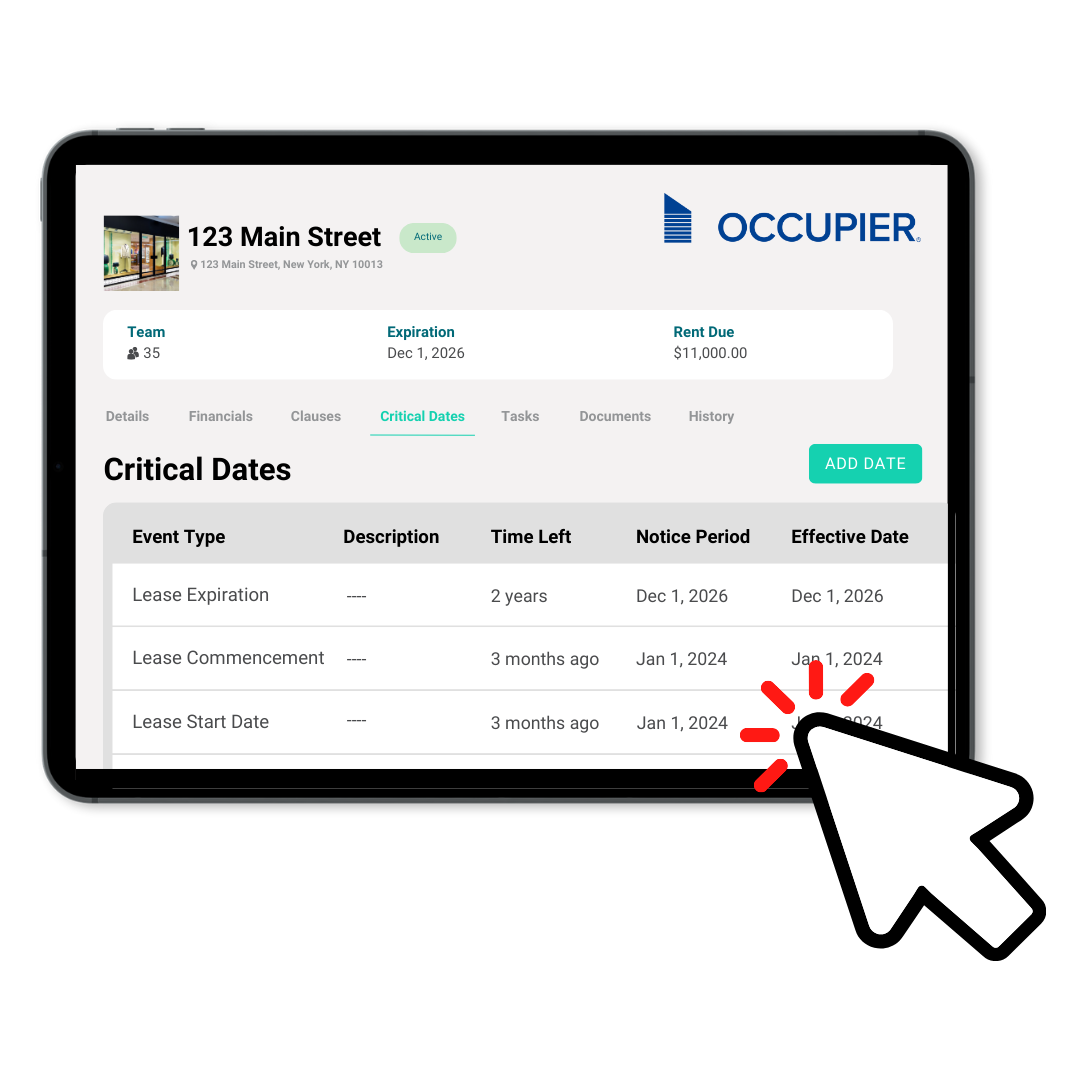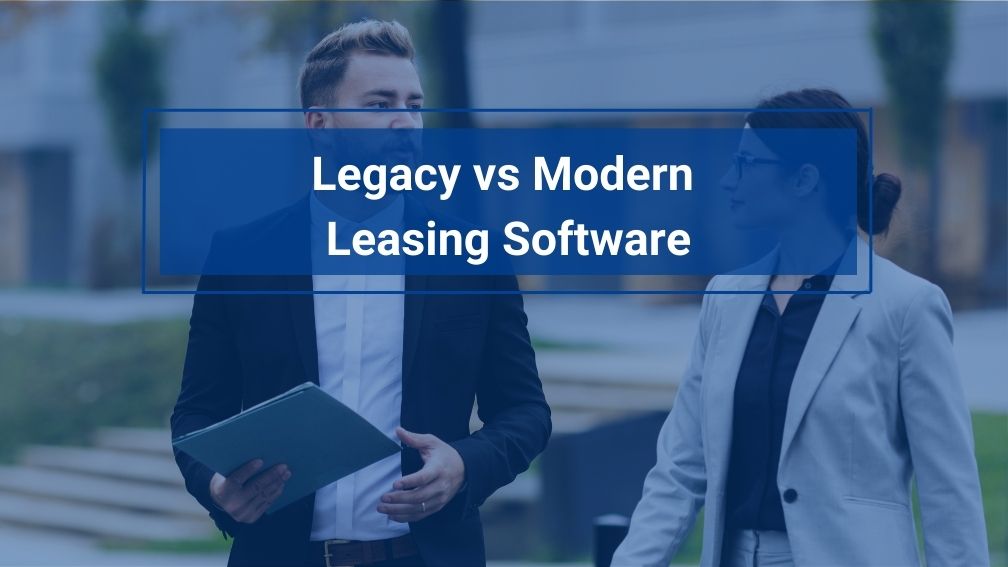Leasing Software: Legacy Tools vs Modern Tech
Last Updated on December 20, 2024 by Morgan Beard
The real estate technology evolution isn’t coming – it’s already here, and it’s exposing a stark divide in how organizations manage their portfolios. On one side stand enterprises still wrestling with legacy leasing systems that feel like relics from another era. On the other, companies are leveraging modern platforms that transform how they evaluate, manage, and optimize their real estate assets.
As a Head of Real Estate or Development Executive, you’ve likely experienced this divide firsthand. Perhaps it surfaces when your team needs three days to compile reports that your competitors generate in minutes. This isn’t just another tech upgrade story. It’s about fundamentally rethinking how real estate team operate in an era where speed, insight, and agility separate market leaders from the pack.
Introduction: The Evolution of Leasing Software
The Shift from Manual Processes to Software Solutions
The commercial real estate process workflow has undergone a dramatic transformation in the past decade. What once required mountains of paperwork, endless spreadsheets, and countless hours of manual data entry has evolved into streamlined, digital processes. For heads of real estate and development executives, this evolution presents both opportunities and challenges as organizations navigate the transition from legacy systems to modern solutions.
Why Businesses are Reevaluating Legacy Leasing Tools
The limitations of outdated leasing tools have become increasingly apparent. The COVID-19 pandemic accelerated this revelation, exposing the vulnerabilities of on-premises systems and highlighting the need for more flexible, resilient solutions. In fact, many legacy leasing tools are undergoing M&A activity as old-school tools struggle to innovate and meet the evolving demands of modern real estate teams.
Forward-thinking real estate leaders are now questioning whether their current tools can support their organization’s growth and adaptation to market changes.
What is Legacy Leasing Software?
Defining Legacy Leasing Tools
Legacy leasing software typically refers to systems developed over a decade ago, often running on outdated technology stacks. These platforms were revolutionary when first introduced but have failed to keep pace with modern business requirements and technological capabilities. Many of these systems have de-prioritized customer support and are slow to build new tech, leaving users frustrated with limited assistance and outdated features.
Common Features and Limitations of Legacy Leasing Software
Legacy leasing software often feels like a time capsule from the early 2000s, with interfaces that harken back to the Windows XP era. Users are typically greeted by cluttered screens filled with tiny text, redundant menu options, and a maze of tabs that require extensive training to navigate. These systems often force users to open multiple windows just to complete basic tasks, while simple actions like searching for a lease can require exact matching of terms with no fuzzy search capabilities.
The software infrastructure itself presents significant challenges. Many legacy systems are built on outdated programming languages and frameworks that are no longer actively maintained or supported. This creates a precarious situation where bug fixes and security patches become increasingly rare or nonexistent. The backend databases often use obsolete architectures that weren’t designed for the scale and complexity of modern lease portfolios, leading to slower performance as data volumes grow.
The Impact of Legacy Systems on Business Performance
The continued use of legacy systems can significantly impact an organization’s ability to compete effectively. According to a recent study by Deloitte, organizations using outdated software systems spend 60-80% of their IT budgets on maintaining legacy infrastructure, leaving little room for innovation and growth. This financial burden is compounded by decreased operational efficiency and missed opportunities for process automation.
Portfolio visibility suffers significantly under legacy systems. Real estate executives often can’t get clear answers to basic questions like “what’s our exposure to a particular tenant across properties?” or “which leases are coming up for renewal in the next 18 months?” without launching multiple reports and manually combining data. This lack of immediate insight makes strategic planning more challenging and increases the risk of missing critical lease dates or renewal opportunities.
The Rise of Modern Leasing Technology
Key Drivers for Modern Tech Adoption in Leasing
We’ve spent countless hours sitting with real estate teams, watching their daily workflows, and understanding their frustrations. What’s driving the shift to modern technology isn’t just the allure of new features – it’s the human need for tools that actually make processes easier. We’ve seen leasing executives miss opportunities because critical data was buried in systems that felt more like digital file cabinets than strategic tools. The growing importance of process automation, escalating cybersecurity concerns, and the constant pressure to reduce operational costs all contribute to the urgency of modernization.
Core Features of Modern Leasing Software
Modern leasing software should feel like having a highly competent assistant who anticipates your needs. Take document management, for instance. Instead of manually creating calendar notification for lease expiration dates, or any critical date, your leasing software should automate those reminders. You also want quick access to historical correspondence, payment history, and legal clauses, amendments and more.
Automated workflows and task management capabilities streamline operations by managing notifications, centralizing data, recording logs of information changes. Real-time collaboration features enable teams to work concurrently on documents while maintaining version control and audit trails. Mobile accessibility has become a standard feature, with native applications and responsive interfaces ensuring teams can stay productive regardless of location.
Real-time collaboration shouldn’t mean “everyone can view the same spreadsheet.” It should mean that when a Real Estate Manager amends a lease document, the software notifies the Accounting team there are pending lease modifications. Automatically aligning internal teams around core leasing processes is key to modernizing your lease processes.
Benefits of Switching to Modern Leasing Software
The advantages of adopting modern leasing technology extend far beyond mere feature improvements. Organizations that make the switch typically report a 40-60% reduction in manual data entry and a 30% improvement in lease processing time. Operational costs often decrease by 25%, while reporting time can be cut in half. These improvements are accompanied by enhanced compliance capabilities and more robust risk management frameworks.
More than just streamlining workflows, modern leasing software changes how teams interact with their portfolio. It transforms data from something you hunt for into a tool that actively helps you make better decisions. When we talk about benefits, we’re really talking about empowering real estate professionals to focus on what they do best – building relationships, spotting opportunities, and growing their portfolio – rather than fighting with their software.
Legacy vs Modern Leasing Software: A Detailed Comparison
User Experience and Interface
The contrast between legacy and modern systems is perhaps most apparent in their user interfaces. Legacy systems often feature complex navigation patterns that require extensive training and can only be accessed from desktop computers. Modern platforms, conversely, offer intuitive designs that minimize the learning curve while providing seamless access across multiple devices.
Collaboration Capabilities
Remember playing email tag with lease drafts, never quite sure if you’re working on the latest version? Or discovering that while you were updating tenant information in the system, your colleague was simultaneously making changes in their version. Where legacy systems rely heavily on email-based communication and sequential workflows, modern solutions enable real-time collaboration with integrated communication tools. Legacy systems turn collaboration into a game of digital telephone, where information gets lost in translation between teams.
Automation and Efficiency
Modern automation eliminates these tedious tasks. Lease abstracts populate automatically from scanned documents. Renewal notices generate themselves based on lease terms. Your system becomes an active participant in your workflow, not just a passive database that needs constant feeding. In addition, advanced analytics and customizable dashboards provide real-time insights and predictive modeling capabilities, enabling more informed decision-making and strategic planning.
Reporting and Analytics
Modern systems transform reporting from a dreaded task into a competitive advantage. Need to share a custom report with a colleague? That should take two – three clicks max. Need to analyze the impact of different renewal scenarios? The answers are at your fingertips, turning complex data immediately actionable.
Integration and Scalability
Legacy systems often operate like islands – isolated from your other business tools and resistant to change. We’ve seen teams maintain separate databases for real estate, accounting, and operations simply because their core system couldn’t talk to other platforms. Modern leasing software typically features architectural flexibility that enables organizations to scale operations efficiently, unlike the rigid structure of legacy systems that often requires costly modifications to accommodate growth.
The Cost of Clinging to Legacy Leasing Software
Hidden Costs of Outdated Systems
The true cost of maintaining legacy systems extends far beyond licensing fees. Organizations must consider the ongoing maintenance and support costs, lost productivity from inefficient processes, and increased security vulnerabilities. Employee satisfaction and retention often suffer when staff must work with outdated tools, while missed business opportunities accumulate due to system limitations.
Missed Opportunities for Growth and Scalability
Organizations relying on legacy systems frequently find themselves unable to capitalize on market opportunities. The inability to expand quickly into new markets, adopt emerging technologies, or respond effectively to market changes can significantly impact competitive positioning. Additionally, outdated systems can make it harder to attract top talent who expect modern tools and technologies.
The Case to Upgrade
The decision to upgrade your leasing software isn’t just a technology choice – it’s a strategic investment in your team’s future. The timing for leasing upgrades has never been more critical. As the commercial real estate world continues to evolve, the gap between organizations using modern platforms and those clinging to legacy systems grows wider. Every month spent maintaining outdated systems isn’t just a technological debt – it’s a competitive disadvantage in a market where speed and insight matter. Through our years of working with real estate organizations, we’ve seen this transformation play out countless times. The most common response we hear? “We should have done this sooner.”
To learn more about Occupier, take a self-guide tour of our leasing software to get a hands-on look at the tool.

Product Tour
Take a self-guided tour and see how the fastest-growing commercial tenants leverage Occupier for lease management & lease accounting.
